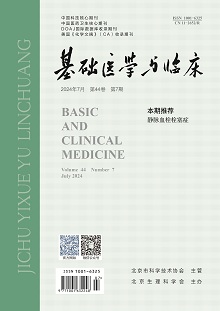Selenium and benazepril inhibit renal interstitial fibrosis in rat with unilateral ureteral obstruction
2018, 38(3):
361-369.
 Asbtract
(
445 )
Asbtract
(
445 )
 PDF (7985KB)
(
265
)
Related Articles |
Metrics
PDF (7985KB)
(
265
)
Related Articles |
Metrics
Objective To compare and study the protective effect of the sodium selenite and benazepril on renal interstitial fibrosis(RIF) in rat model of unilateral ureteral obstruction(UUO) and its mechanism . Methods The male SD of clean grade rats were randomly divided into sham-operation group, UUO group (UUO model was established by ligating unilateral ureter), UUO+ sodium selenite group group(sodium selenite 0.2mg/kg?d gavage), UUO+ benazepril group (benazepril 10mg/kg?d gavage), with 18 in each group.At day 7,14 and 21 after the treatment, 6 rats selected randomly from each group were killed.The extent of RIF was evaluated by HE and Masson staining of the renal tissue. The expression of connective tissue growth factor(CTGF),transforming growth factor-β1(TGF-β1),alpha smooth muscle actin(α-SMA) and III collagen( Col III ) were detected by Immunohistochemical method.The protein expression of CTGF and TGF-β1 were detected by western blotting. Chemical colorimetric method was used to detected the contents of supper oxide dismutase (SOD) ,malondialdehyde (MDA) and glutathione peroxidase ( GSH -px) in renal cortex. Results The extent of RIF and the expression of CTGF,TGF-β1, α-SMA and Col III in renal cortex were significantly lower in sodium selenite group and benazepril group at day 7,14 and 21 after the operation compared with that in UUO group(P<0.05 or P<0.01 ). In sodium selenite group and benazepril group ,the contents of SOD and GSH -px in renal cortex were higher significantly than those in UUO group at day 7,14 and 21 after the operation respectively(P<0.05),but the MDA in renal cortex was significantly decreased(P﹤0.05).There were no significant differences in the indexes between the two groups of sodium selenite and benazepril. The expression of CTGF,TGF-β1, α-SMA ,Col III and the extent of RIF were positively correlated to the level of MDA in UUO group (P ﹤0.05,respectively), and negatively correlated to the level of SOD and GSH-Px(P ﹤0.05,respectively). The expression of CTGF was positively correlated to the expression of α-SMA and Col III in UUO group(P <0.05).The expression of CTGF、a-SMA and ColⅢ were positively correlated to RIF in UUO group (P <0.05). Conclusions Sodium selenite and benazepril can reduce the extent of RIF in rat model with unilateral ureteral obstruction.


